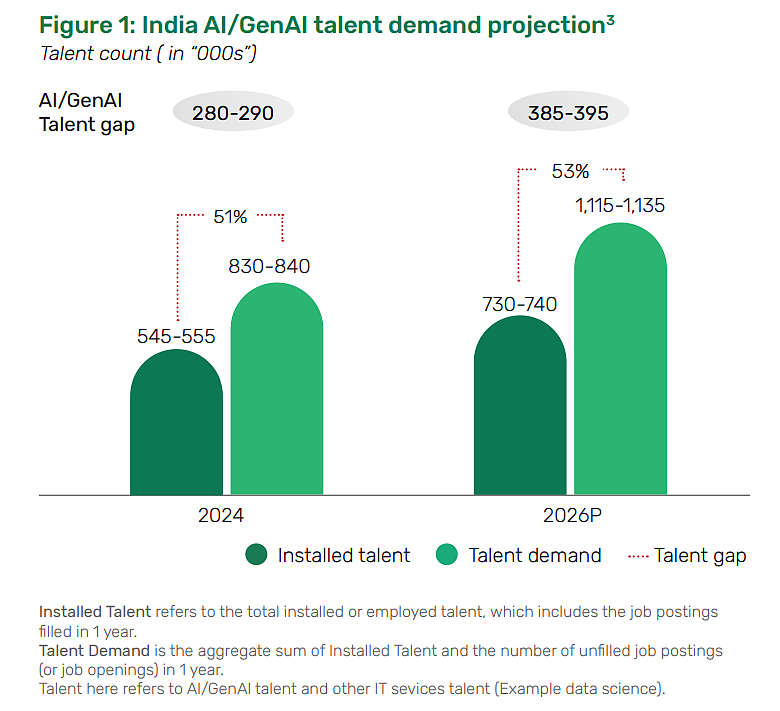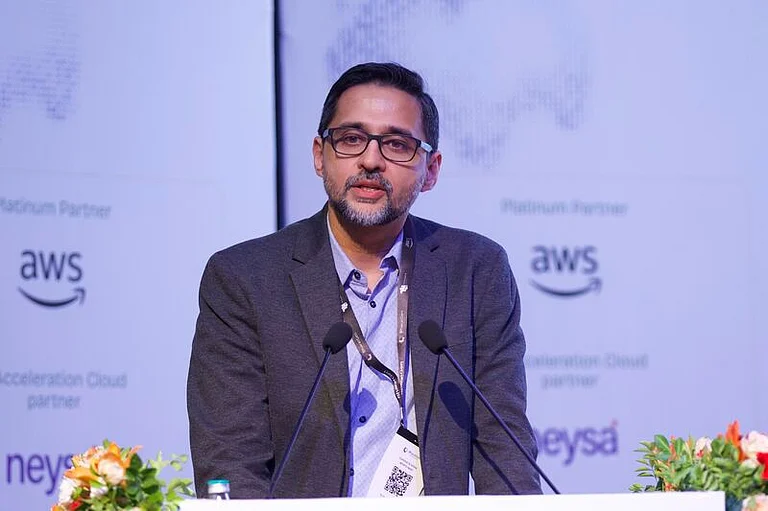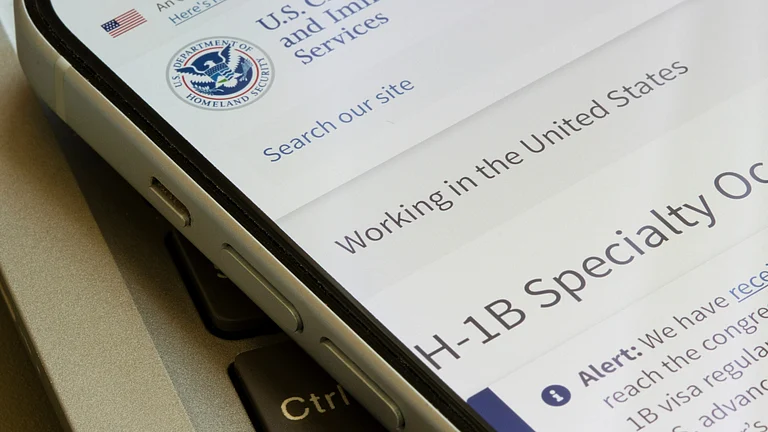India’s largest private-sector employer, the Information Technology (IT) sector — which employs over 5.8 million workers — is redrawing its hiring strategy. The sector, which once rolled out thousands of job offers to fresh tech graduates, has now reduced its intake, focusing instead on sharper, more specialised roles, says Vishnupriya Raghavan, Vice President, Client Advisory and Transformation at StackRoute, NIIT Limited.
Just look at the publicly available NASSCOM data on new workforce additions in India’s tech sector. In FY21, the sector added a record 445,000 jobs. A year later, that dropped to 300,000. In FY23, net hiring declined steeply, with just 60,000 additions. The latest report by the IT and BPO industry body shows that in FY24, companies added around 126,000 employees. Yet, during this entire period, the total workforce has grown only marginally — from 5 million in FY21 to 5.8 million in FY25.
“Job offers used to be rolled out with certainty — that’s a big difference between then and now. But then came the pullbacks. Now, the Gen AI wave is redrawing what skills are even considered relevant. It’s been more of a hiring freeze. I’d say it’s actually a skills reset. Companies are still hiring, but for newer, sharper roles. Earlier, there were just ‘software engineers’ — and that could mean anything. You could get into UI/UX, testing, coding, or become a lead analyst," said Raghavan. Adding that today, companies are hiring for very specific roles — prompt engineers, ML Ops experts, cloud-native solution architects for BFSI.
"It's becoming much more specialised. So for freshers and mid-level engineers, the question is: ‘Is there a job?’ The answer is yes. But the real question people need to ask is: ‘Do I match the job?’” said Raghavan.
She further adds that the rise of generative AI has transformed traditional tech roles at both entry and mid levels. Earlier roles like software developer, QA engineer, data analyst, technical writer, and DevOps engineer have evolved into highly AI-integrated roles such as AI-augmented developer, AI-assisted test engineer, AI insight analyst, AI content specialist, and MLOps/AI Ops engineer.
At the mid level, even roles like business analysts and delivery managers are now expected to incorporate GenAI capabilities. AI has already been integrated into workflows — for example, code is now co-written using tools like GitHub Copilot, shifting the focus from syntax to design, debugging, and prompt engineering.
Raghavan notes that while some tasks like documentation and stakeholder interviews remain, AI is increasingly used to draft RFPs, simulate solutions, and create impact assessments. As a result, tech professionals must now act as curators of context and value — adapting to AI-enabled processes rather than relying solely on traditional skill sets.
Skill Demand-Supply Paradox
In India’s job market, there’s a paradox, says StackRoute's VP.
“Talent surplus in traditional roles. Talent scarcity in transformation-critical roles. Which is why a lot of reskilling and upskilling becomes very, very mandatory today. GenAI is not reducing jobs. It is only redefining who's relevant,” she adds.
India contributes over 58% to the global outsourcing market, with a $250 billion market valuation. However, a BCG report from February noted that the country faces a growing GenAI talent gap — currently at 51% — particularly in areas like LLM fine-tuning, cloud computing, and cybersecurity. The report also found that although 83% of developers recognise GenAI’s value, only 39% are proficient users. Adoption is hampered by ineffective mass training, while tailored, context-specific programmes have proven far more effective at improving productivity and tool acceptance.
The report also revealed that 56% of delivery leaders lack a standardised methodology for measuring productivity gains or quality improvements post-GenAI adoption, and 66% report that their end clients are extremely concerned about GenAI security. Furthermore, one in every three developers struggles with tools generating inefficient or incorrect code — and psychological concerns persist: ‘GenAI will replace me in my job.’

Earlier, at companies like Wipro or Cognizant, freshers were tested on their syntax and logical coding skills. In their first year, they typically wrote boilerplate code or maintained legacy applications. Now, expectations have changed. Freshers are expected to work with GenAI co-pilots from day one. They must understand prompts and use AI tools to accelerate solution-building from the very beginning, according to Raghavan.
“Many entry-level roles have been reduced. But it's not that the jobs are gone — they’ve been redefined. Freshers still move up the ladder through standard career paths, but the post-GenAI era has shifted how companies structure their workforce. There’s a flattening at the entry level, and companies are cutting back on bulk fresher hiring. Instead, they’re turning to models like contract-to-hire, internships, and gig roles,” said adding that mid-tier roles are now expected to be AI-augmented — using GenAI to automate repetitive development tasks.
“Traditional developer roles are becoming less relevant. The overall talent model is shifting from the old pyramid structure to more of an hourglass. There’s increased investment in senior specialists like architects, while mid- and lower-level execution roles are being trimmed. Earlier, tenure was valued over skills. Today, it's the opposite — skills matter more than years of experience,” Raghavan adds.
Last week, during the post-quarterly press conference, HCLTech’s Chief People Officer Ram Sundararajan said the company will now focus on fresher hiring based on specialisation rather than volume.
“We are talking about an elite cadre of freshers who will be paid more. These elite candidates will receive higher compensation — services freshers, for example, will be hired at up to 3X the usual pay, and software freshers at up to 4X,” he noted.
































